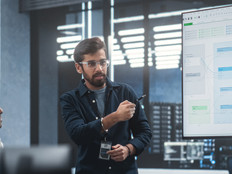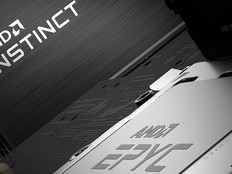The March Toward Greater Efficiency in the Data Center [#Infographic]

Since it first noticed that its data centers were using a huge amount of power, Sandia National Laboratories has searched endlessly for ways to improve efficiency.
The agency has found a number of innovations that have helped it make better use of the energy its data centers use and the power it uses to cool them.
“We’re never really satisfied,” says Dave Martinez, an electromechanical technologist in Sandia’s Infrastructure Computing Systems department. “We want to figure out how we can save energy and get the most use out of that energy.”
Sandia runs three data centers — two large centers and a smaller one — that handle tasks such as providing IT infrastructure and corporate computing for the lab, as well as classified operations. Martinez, who has worked at Sandia for 28 years, says the data centers have gone from liquid cooling to air cooling and back to liquid again.
In the mid-1990s, Sandia started to look at its energy consumption. Computers were becoming denser, and the air exiting them becoming hotter, so cooling the machines grew increasingly difficult, prompting Sandia to begin using cold-aisle and hot-aisle configurations.
“We started thinking that our energy bill was really huge and how we could improve that,” Martinez says. “How could we improve our efficiency in cooling?”
Sandia’s data centers now use both hot- and cold-aisle containment on all of their heavy-duty air conditioning racks. Workers are studying which containment strategy is more effective.
One innovation that has yielded excellent results has been to string sensors above the hot aisles. When computing is heavy and temperatures rise, the sensors tell the cooling units to send more cold air. When servers aren’t in heavy use and exhaust temperatures cool down, the sensors slow the speed of the cooling fans. “This saved us a huge amount of energy and operating costs,” Martinez says. “Somewhere in the neighborhood of $5,000 to $15,000 per quarter.”
Sandia also has taken advantage of the cool, dry winter air in New Mexico, using it to chill the water used to cool the data centers. “We started producing chilled water using direct and indirect evaporative cooling on a large scale,” says Chris Evans, resource conservation lead for Sandia’s Facilities Management and Operations Center.
One of the data centers received all its cold water last winter from water chilled by evaporative cooling. This method has been effective from November to March. Evans hopes to extend the useful period for evaporative cooling from October to April and perhaps even further.
Another step the lab has taken to improve its energy use is to factor efficiency into its procurement decisions. Previously, data center acquisitions focused mainly on computing power, but now Sandia factors in how new hardware will be powered and cooled, which has further improved energy efficiency.
Moving forward, Sandia officials hope to emulate the Energy Department’s National Renewable Energy Laboratory, which runs the most efficient data center in the world, by using heat captured from the data center to warm other parts of the lab. It’s another step in Sandia’s continuing quest to operate at peak efficiency.
“We just know it’s the right thing to do,” Evans says. “We’re using energy and we’re producing greenhouse gases, and we need to do what we can to minimize that.”
Voices

“Federal data centers can be extremely energy-intensive. Moving to liquid cooling can eliminate the need for compressor-based cooling, resulting in large energy efficiency improvements.”
— Bill Tschudi, Principal Investigator and Group Leader, High-Tech Buildings and Industrial Systems group, Lawrence Berkeley National Laboratory

“Computing generates heat, and cooling is needed to dissipate the heat that computing generates. NSF supports research to coordinate computation and cooling, which has profound implications for increasing energy efficiency.”
— Keith Marzullo, Director, Computer and Information Science and Engineering Division, Computer and Network Systems, National Science Foundation

“Cooling IT equipment takes a lot of energy and increases costs. Small changes, such as using more efficient servers and storage hardware, add up. Smart cooling that can be fine-tuned to specific hot spots further boosts data center efficiency.”
— Greg Schulz, Senior Adviser, Server and StorageIO








